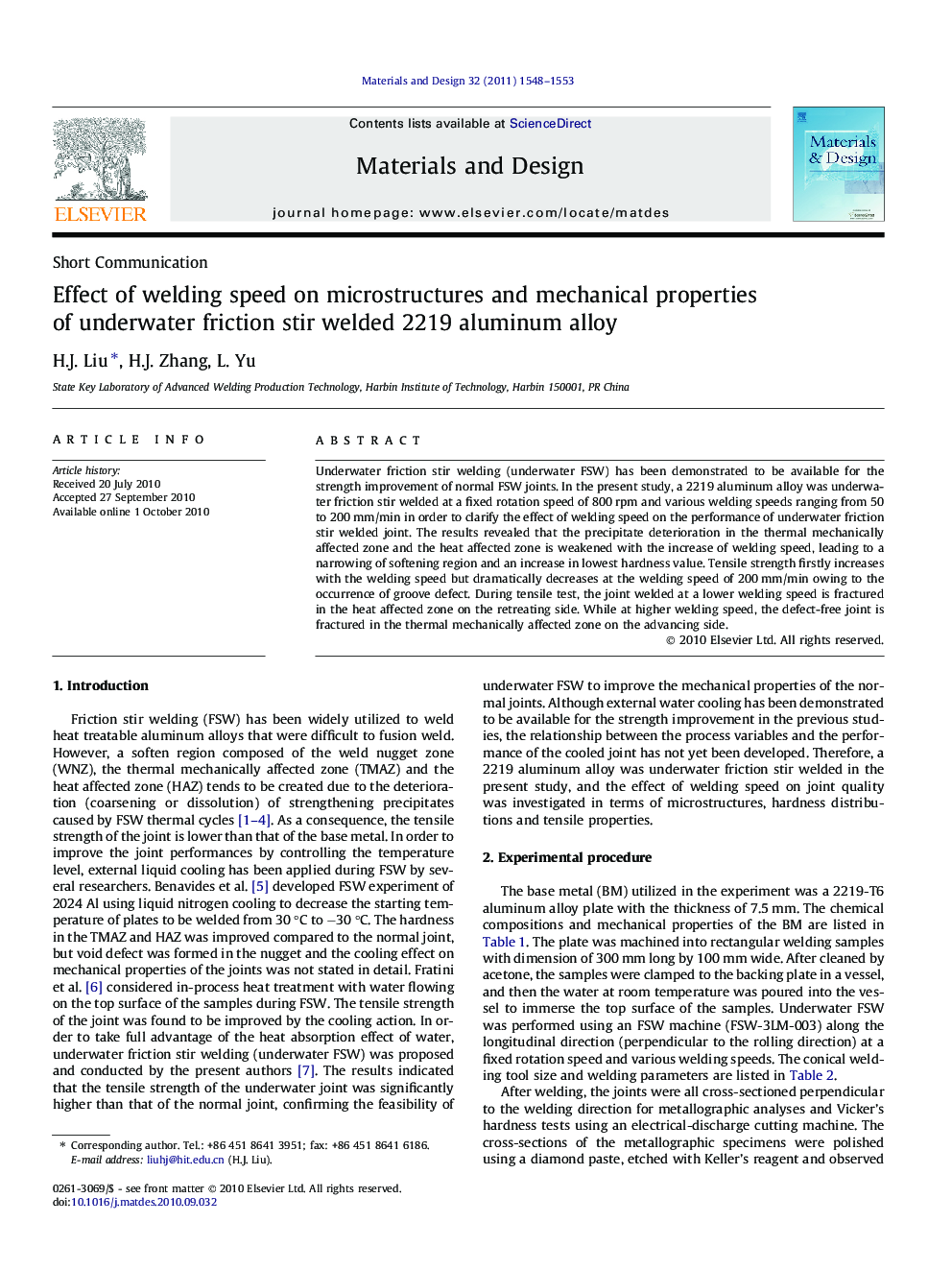| Article ID | Journal | Published Year | Pages | File Type |
|---|---|---|---|---|
| 831460 | Materials & Design (1980-2015) | 2011 | 6 Pages |
Abstract
Underwater friction stir welding (underwater FSW) has been demonstrated to be available for the strength improvement of normal FSW joints. In the present study, a 2219 aluminum alloy was underwater friction stir welded at a fixed rotation speed of 800Â rpm and various welding speeds ranging from 50 to 200Â mm/min in order to clarify the effect of welding speed on the performance of underwater friction stir welded joint. The results revealed that the precipitate deterioration in the thermal mechanically affected zone and the heat affected zone is weakened with the increase of welding speed, leading to a narrowing of softening region and an increase in lowest hardness value. Tensile strength firstly increases with the welding speed but dramatically decreases at the welding speed of 200Â mm/min owing to the occurrence of groove defect. During tensile test, the joint welded at a lower welding speed is fractured in the heat affected zone on the retreating side. While at higher welding speed, the defect-free joint is fractured in the thermal mechanically affected zone on the advancing side.
Related Topics
Physical Sciences and Engineering
Engineering
Engineering (General)
Authors
H.J. Liu, H.J. Zhang, L. Yu,
